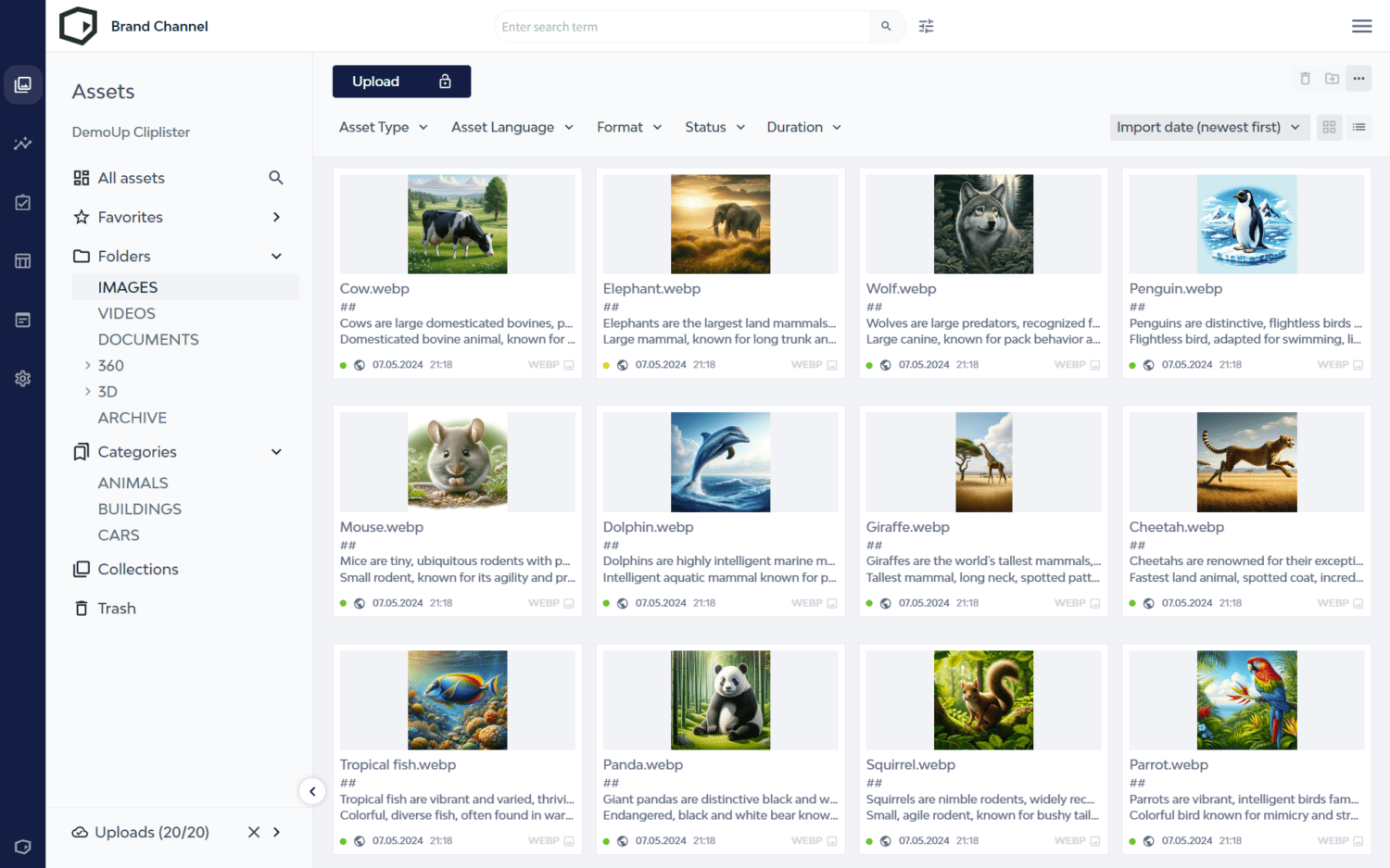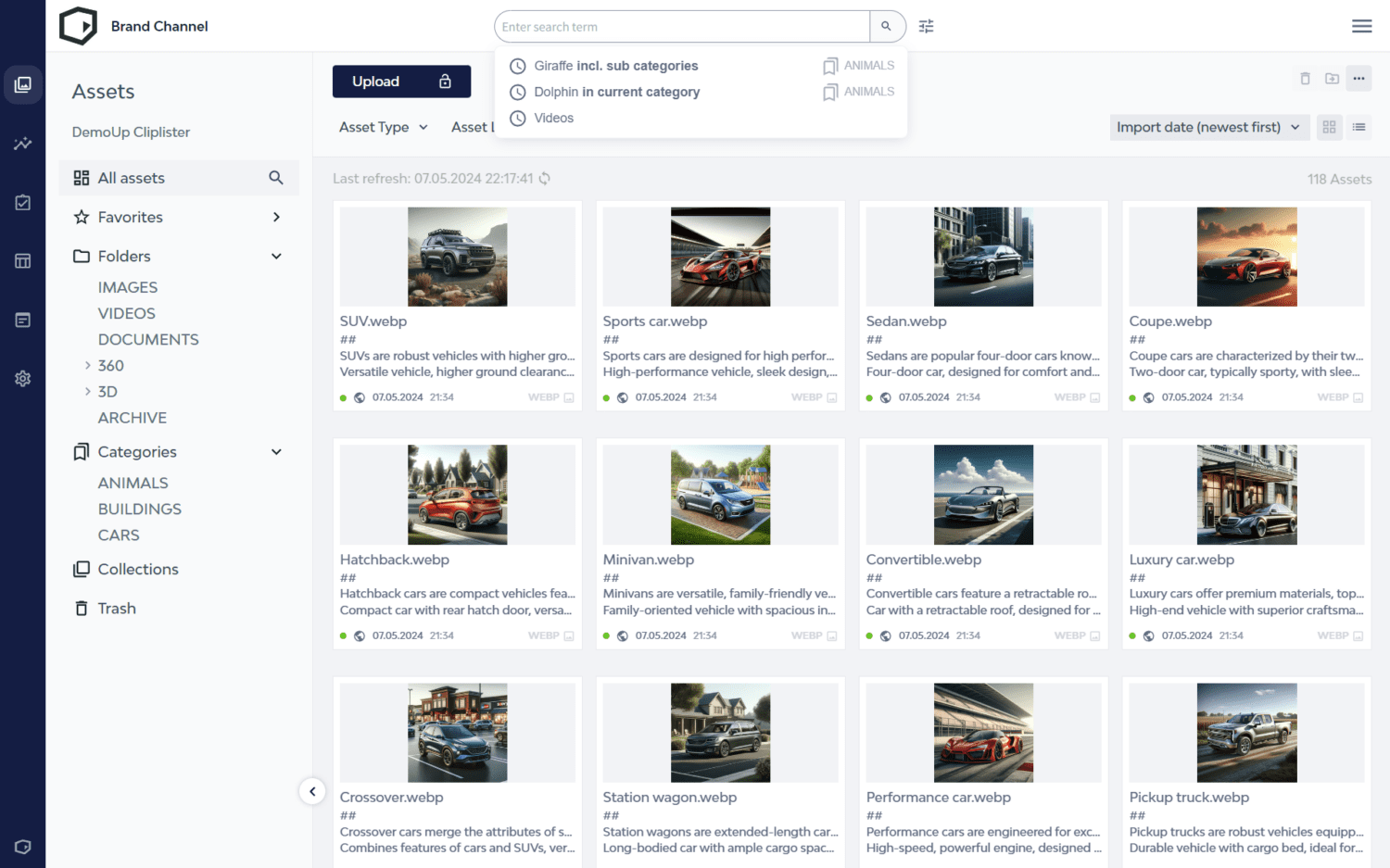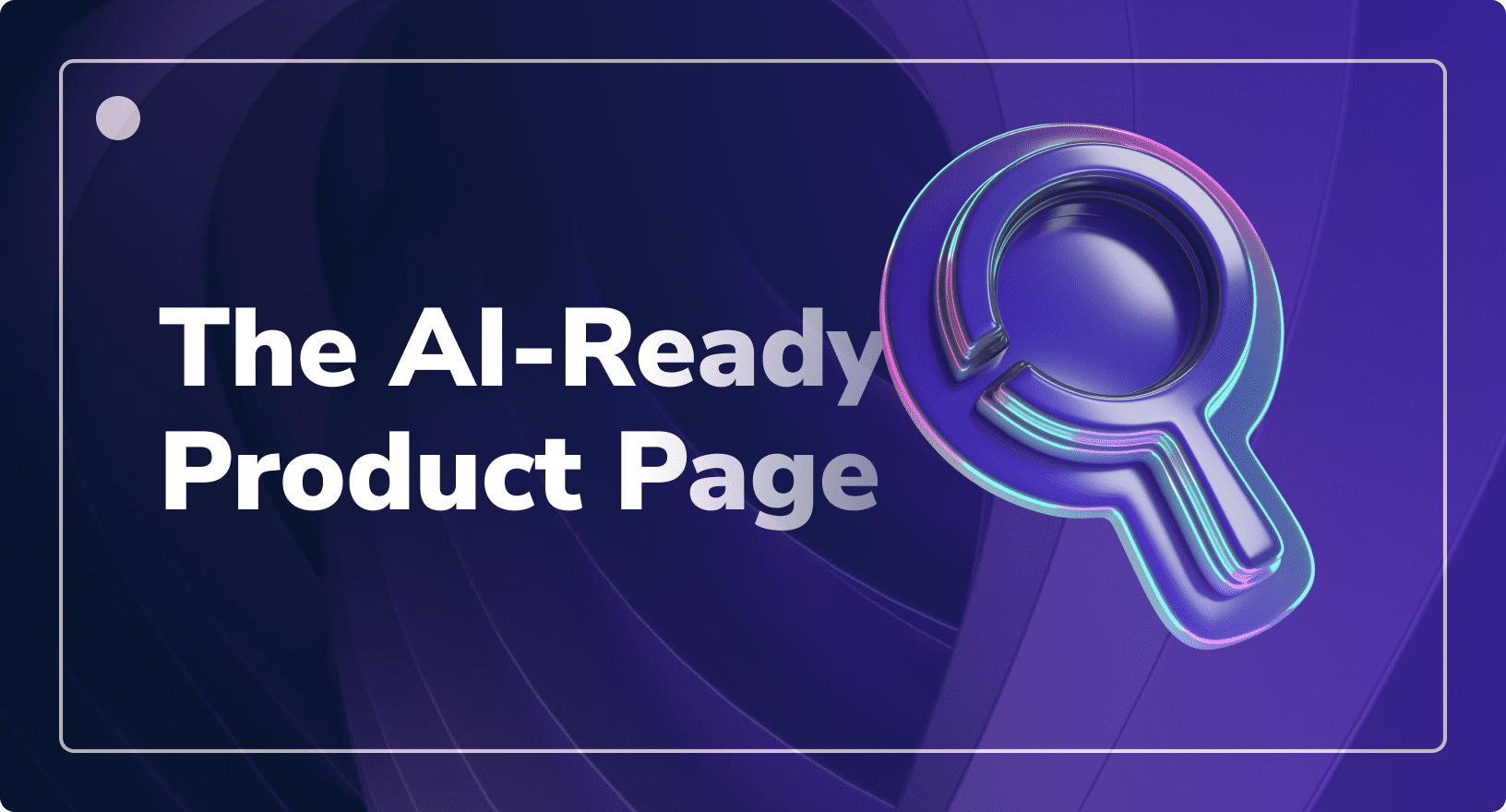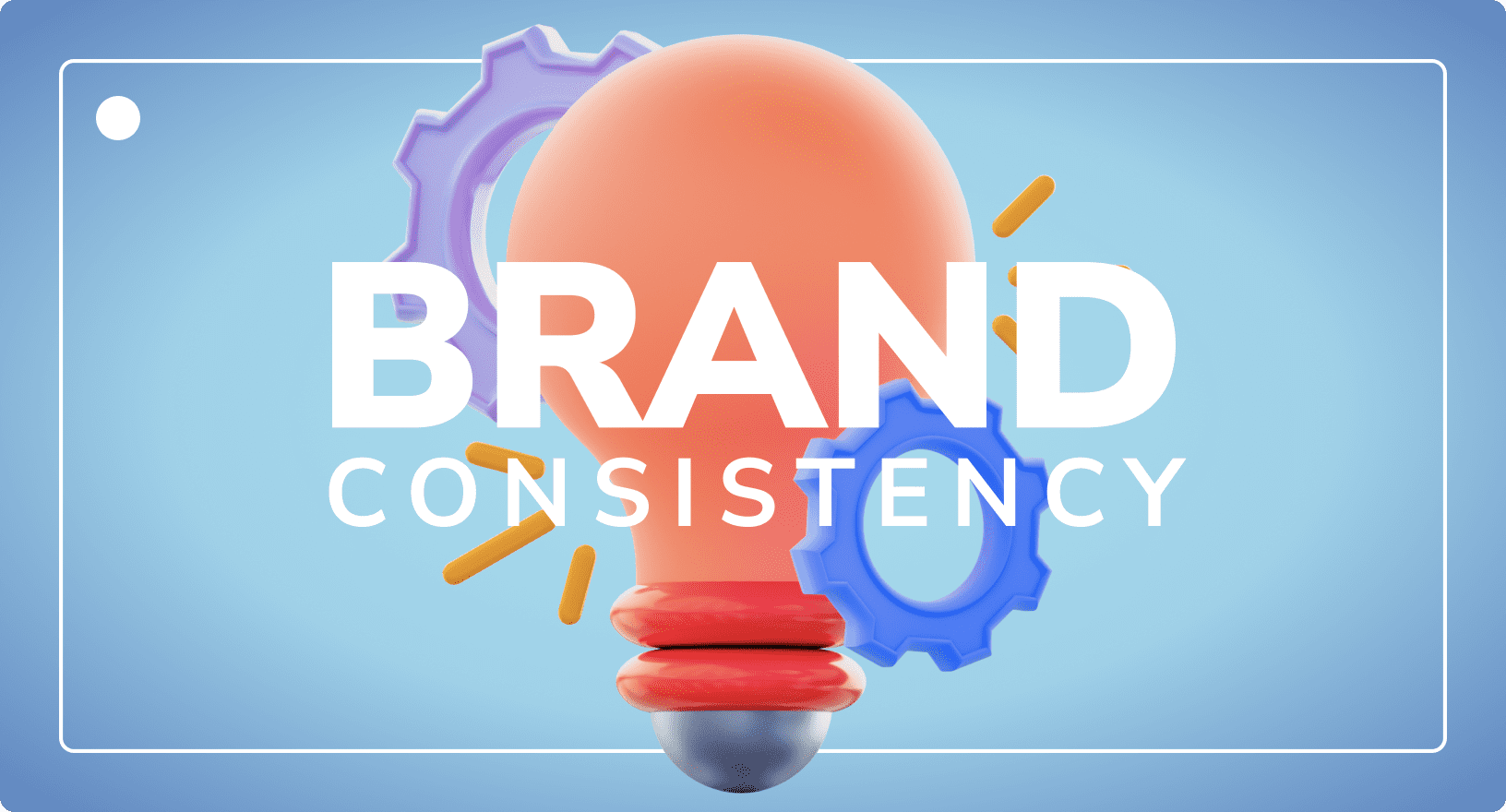How to Create a Digital Asset Management Strategy in 8 Steps
Digital Asset Management
Updated on February 13, 2025
Today, the control and management of digital resources are vital to organisations and business entities, irrespective of their size.
Digital asset management (DAM) is the answer to effective organisation, storage, and circulation of these digital resources, or assets.
We aim to present an exhaustive guide for creating an efficient digital asset management strategy in 8 simple steps.
If you are new to digital asset strategy and management, this blog will deliver the knowledge and tools required for constructing a strong and efficient DAM strategy.
Understanding Digital Asset Management Strategy
For any organisation, a DAM strategy serves as an itinerary on how to handle, store, and distribute its digital assets.
Among these are media assets, including images, videos, documents, audio files or other multimedia. The strategy is intended to provide for the asset’s availability to users while they remain well organised in categories and safely stored.
What is a Digital Asset Management Strategy?
A well-crafted DAM strategy can facilitate better communication, help reduce operational costs, and ensure consistency across all marketing channels.
Efficient use of digital materials requires effective organisation.

The purpose of a DAM system ensures uniformity in application, access to usage insights, streamline workflows, and secure intellectual property rights of digital content.
Benefits of a Comprehensive DAM Strategy
A comprehensive DAM strategy can bring numerous advantages to organisations. It enhances efficiency and productivity while maximising brand consistency and revenue generation.
Additionally, it provides better management of existing digital assets and supports future growth.
A DAM strategy should accelerate content creation processes by providing tools for version control, on-the-fly file conversions, and workflow approvals.
Creative production is expedited, promoting efficiency and agility by reducing time spent on manual tasks such as legal approval or brand reviews.
A DAM solution also ensures brand consistency by providing a centralised location for team members and external contributors to access on-brand files.
This eliminates the use of outdated or low-quality versions, ensuring that the right content is used at every customer touchpoint.
Steps to Create a Digital Asset Management Strategy
Understanding how to form a strong DAM strategy helps companies arrange, preserve, and use their digital resources effectively to boost work output and meet corporate goals.
Step 1: Conduct a Digital Asset Audit
Accuracy, relevance, conformity, and asset checks should be carried out to ensure that the assets meet industry standards.
For instance, a clutter-free and efficient DAM system can be maintained by systematic identification of outdated or irrelevant assets.
Similarly, the collection of items must be controlled by performing quality control checks.
Conducting a digital assets audit is important as it helps identify areas that may need improvement.
Step 2: Define Business Objectives and Goals
A DAM initiative’s achievement is impossible without clear goals and objectives.
This is done by setting specific and measurable targets that enable organisations to align their DAM strategy with broader company vision and objectives.
It’s essential to ensure that the goals set for the DAM initiative directly contribute to the overarching business strategy.
Step 3: Choose the Right DAM Solution
After you define your business objectives, it’s time for the fun part – choosing a DAM system.
When you evaluate software, you aren’t just looking for a tool – you’re looking for a partner who can support you and your business as it grows.
Review the functions and abilities of the best DAM systems they match up with up your requirements. It’s also vital to compare customer service quality and support alongside overall user experiences for smooth integration.
Another important factor is client satisfaction, which can be determined by customer reviews on sites like G2. Although subjective, understanding what others have experienced may offer useful insights into this element.
Of course, pricing is an integral part of the evaluation process.
However, the cost-versus-performance tradeoff needs to be considered when comparing different plans.
Often, a reduced price could mean compromised functionality or lessened support, making it necessary to weigh out the value offered by each solution.
Overview of Popular Dam Systems and Platforms
Businesses today are increasingly using DAM systems and platforms to better manage their digital assets.
Below is a summary of some of the most common DAM software providers in the market that can help organisations select appropriate software for their needs.
- DemoUp Cliplister – DemoUp Cliplister allows its customers to syndicate product videos, 3D models and augmented reality experiences at over 450 point-of-sales across the world. Directly from its DAM system.
- Bynder – Bynder is a powerful DAM solution that excels at brand management, but it’s also expensive and difficult to integrate.
- Canto – Canto provides advanced version control, customisable metadata fields, and AI-powered tags, which enable fast asset management and retrieval. Nevertheless, it comes with a steep learning curve.
- Aprimo – Aprimo is more of an marketing operations platform than a DAM. However, it includes features like advanced search capabilities, asset versioning, and permission-based access control to streamline collaboration.
- Cloudinary – Cloudinary offers several features for efficient digital asset management, including automation, flexible deployment options, and integrations with popular tools, though you’ll need a team of developers.
- CELUM – CELUM’s DAM platform centralizes storage, manages metadata, and automates workflows to support creative teams from creation to distribution. But, it lacks features for content syndication.
- Brandfolder by Smartsheet – Brandfolder is a one-stop shop for managing brand assets, making it easier to collaborate and maintain uniformity in messaging. It has features such as version control, access controls, metadata management, and integrations with other tools and platforms.
- Scaleflex – Scaleflex has Filerobot, a DAM specialised in image and video management services. This application enables businesses to manage and optimise their digital media assets.
- Wedia – Wedia offers DAM and MRM solutions that help marketing teams to organise their digital assets, streamline content creation, and manage marketing campaigns based on digital assets.
- Acquia DAM – Acquia DAM is specifically designed to manage, deliver, and optimise digital experiences related to DAM. It focuses on the organisation, storage, retrieval, and distribution of images and video files.

Comparing DAM Providers? Download the Playbook!
Download NowStep 4: Develop a Metadata Management Plan
Metadata standards and management are paramount in digital asset management. Metadata provides the basis for easy search, better organisation, and teamwork.
The absence of proper metadata management leads to confusion in businesses, resulting in redundant work and under-utilisation of assets.
A good metadata management plan enables companies to easily handle complex assets, stay compliant with industry regulations and foster cross-team collaboration.

The choice of the right DAM system is critical as it acts as a central repository for all assets with advanced search capabilities, version control, and access rights.
Categorising assets can improve their retrieval and usability.
A well-defined folder structure, along with consistent naming conventions, significantly enhances the ease with which team members locate and identify assets.
By organising them according to type, category, or purpose, companies speed up workflows, enable smooth collaboration, and reduce instances where assets may be duplicated or lost.
Step 5: Implement Access Control and Security Measures
The digital era is characterised by increasing cyber threats and data breaches, and there’s an urgent need to deploy strong access control mechanisms and security precautions to safeguard delicate digital properties.
Access control ensures that only those who are authorised have the appropriate permissions to access specific assets within a system.
Within a DAM system, user roles are critical determinants of how much access individuals can have.
As such, administrators can let users perform actions on assets like view, edit, or share by assigning them particular rights and roles.
Digital Asset Management for E-Commerce
Tailored to Your Unique Digital Asset Needs
Store, Organise & Share
Upload assets in bulk or one at a time. Create collections for easy sharing.
Customise Your Workflows
Customise your digital asset workflows to fit any existing strategy or process.
Publish to the Point of Sale
Deliver brand-created assets directly to the digital point of sale.
Password protection is one of the basic measures of access control and security. It’s the first layer to deter unauthorised persons from accessing digital materials and confidential personal information.
For organisations to enable only authorised staff to use their resources, they must have mechanisms in place for users to verify themselves using passwords.
An additional authentication factor called multi-factor authentication (MFA) may require a user to verify his/her identity through multiple means, such as a password plus a time-based security token.
Step 6: Create Naming Conventions and Hierarchical Structure
The DAM system requires consistent names and hierarchy to be created in order to organise, find and preserve assets.
File naming conventions are a collection of standardised rules that manage the way files are named and organised in a DAM system.
These guidelines make it possible to quickly identify, locate and retrieve digital assets.
They enable users to determine certain characteristics of a file like its asset type, creator, date or version.

A well-designed file naming convention will support asset organisation, facilitate asset findability, and simplify asset maintenance.
A hierarchical folder structure is the way in which folders and sub-folders are organised within a DAM system.
Implementing consistent nomenclature strategies and hierarchical systems in DAM software provides many benefits in managing digital assets effectively.
By deploying standardised asset names across all types, it becomes easier to search for such content items and reuse them across the organisation.
Step 7: Provide Training and Ongoing Support
For any organisation to succeed, its workforce must be provided with skills and knowledge to operate systems efficiently.
Providing effective support to a new DAM tool implementation by offering training and continuous backing is very important.
This entails developing well-laid-out training materials, conducting interactive training sessions and workshops, and constantly availing assistance to respond to queries or handle system-related problems.
Step 8: Monitor, Evaluate, and Improve
Consistently monitor how your teams use your DAM system. Like the initial asset audit, this provides insights on focus areas to improve in.
Track important metrics like asset usage, utilisation rates (how often people login) and identify bottlenecks in your process.
Create regular feedback sessions with various stakeholders to get concrete feedback on what they like, don’t like, and where they feel they are losing time.
Armed with this information, you will have the insights you need to optimise and improve your DAM workflows and processes.
Implementing the Strategy
The implementation of DAM strategy involves the crucial process of onboarding, training users, and integrating the system within an organisation’s digital ecosystem.
Digital asset management serves various purposes, such as expediting the storage, management, sharing, and publication of digital assets securely and efficiently.
Integrating with Existing Systems
To begin with, you have to outline integration goals during DAM system implementation.
For instance, content delivery improvements, streamlined content workflows, and enhanced collaboration are some of the objectives that are aligned with your organisation.
It’s essential that you consider choosing a suitable digital asset management solution that matches your integration requirements and provides flexibility while being consistent with current systems.
Here are some examples of common DAM software integrations:
- PIM Systems
- Content Approval Software
- Content Syndication Platforms
- Content Management Systems
- E-Commerce Platforms
- ERP Systems
- Messaging Tools (Slack, MS Teams)
- Office Suites (G-Suite, Microsoft 365)
- Content Creation Tools (Adobe Creative Cloud, Figma)
- Video Editing Tools
Collaborating with Creative Teams and External Partners
It’s important for a company’s in-house creative team and outside agencies to work together to create brands that connect with customers.
Applying digital solutions and enhancing best practices can help streamline communications, project management, asset management, and performance evaluation.
For a successful partnership, it’s necessary to have clear communication channels.
This includes creating transparent and consistent pathways of communication between internal staff and external agencies, which can foster an understanding of their roles and, thus, effective teamwork among them.
Updating all parties involved about the progress made so far will also contribute towards maintaining a good working relationship by ensuring everyone is on the same page.
Future-Proofing Your DAM Strategy
A DAM strategy that’s both efficient and streamlined is of utmost importance.
As companies grow, the necessity for a comprehensive DAM system becomes apparent since it goes beyond the limitations of mere file-sharing tools.
Software like Dropbox, Sharepoint and Google Drive defininitely have thier places within most organisations.
But their abilitiy to store, organise, and share across an enterprise is limited. That’s where a comprehensive DAM platform like ours comes into play.

Nevertheless, it’s important to gauge whether or not your existing DAM strategy is future-proofed, guaranteeing its long-term existence and adaptability.
Utilising Artificial Intelligence
The role of Artificial Intelligence (AI) in the marketing and DAM industries grows every day.
Marketers and businesses use generative technology to create, edit, optimise, and automate manual processes to take days what took weeks and months just a year or two ago.
For DAM systems specifically, AI can improve content organisation and retrieval through functions like automatic metadata tagging, search functions, and even creative automation.
This use of algorithmic technology is leading to a level of personalisation previously thought unattainable.
Adapting to Future Growth
The rise in content production implies that there’s a growing number of digital assets that are becoming more voluminous and complicated.
This necessitates strategic scaling up of DAM systems so that they can handle the ever-increasing library of assets effectively.
In anticipation of future expansion, therefore, it’s essential for organisations to evaluate their present DAM infrastructures for scalability.
As businesses grow, so too does their workforce, which sometimes spreads across boundaries, such as in global locations.

The DAM system should thus ensure that remote users have easy access and prevent any variations in user experience across different locations.
Besides, the ‘big video’ age results in technical challenges due to ever-increasing digital file sizes, such as 4K videos, among others.
Therefore, future-proofing DAM systems require them to accommodate these large files and provide automatic transcoding and rendering capabilities accordingly.
Organisations need performance-driven solutions capable of processing intricate video formats amidst rising demand for video content. If you’re struggling with video, read our guide on digital video asset management best practices.
Making Data-Driven Decisions
In a hyperconnected world, data-driven decision-making has become a cornerstone of success for organisations navigating today’s business environment.
Data-driven decision-making enables objective choices, improves accuracy, identifies opportunities, reduces risks, enhances strategy, deepens customer insights, optimises costs, and drives continuous improvement.
Conclusion
Organisations that invest in a solid DAM strategy can reap significant benefits, including increased productivity, faster time-to-market, enhanced customer experiences, and substantial cost savings.
To create a successful DAM strategy, organisations must evaluate their current asset management processes.
They must establish clear goals and objectives, select the right DAM solution, implement a robust metadata schema, and train their workforce on proper usage.
These steps are how businesses can create and implement an effective DAM strategy customised for their unique needs and requirements.
At DemoUp Cliplister, we understand the intricacies of developing and implementing a comprehensive DAM strategy.
Our team of experts can offer a free consultation to help you create a strategy tailored to your business needs.
Contact us today to learn how we can help you maximise the value of your assets and achieve your business objectives.

Frequently Asked Questions
Below are the frequently asked questions regarding digital asset management.
Conducting a digital asset audit in a DAM strategy assesses the current state of an organisation’s digital assets, including their quality, organisation, metadata, and usage. This helps identify gaps, redundancies, and opportunities for improvement, leading to a more effective and efficient management of digital assets.
When choosing the right DAM solution for your organisation, consider scalability, user-friendliness, integration capabilities, metadata management, security features, and budget constraints.
Metadata management provides contextual information about digital assets, making them discoverable, searchable, and usable across the organisation. Properly managed metadata improves searchability, facilitates asset organisation, ensures consistency, enhances asset tracking, and enables efficient workflows, leading to better asset utilisation and increased productivity.
Implementing access control and security measures in DAM ensures that digital assets are protected from unauthorised access, misuse, and theft. It helps maintain data integrity, compliance with regulations, and confidentiality. Access control enhances privacy, reduces the risk of security breaches, and safeguards valuable assets from potential threats.
AI enhances digital asset management by automating metadata tagging, content recognition, and keyword extraction, improving search and retrieval efficiency. AI algorithms also enable content analysis, personalised recommendations, and predictive insights.
Better Content. More Sales.

Fill out the form to discover our end-to-end eCommerce content solutions for brands & shops




